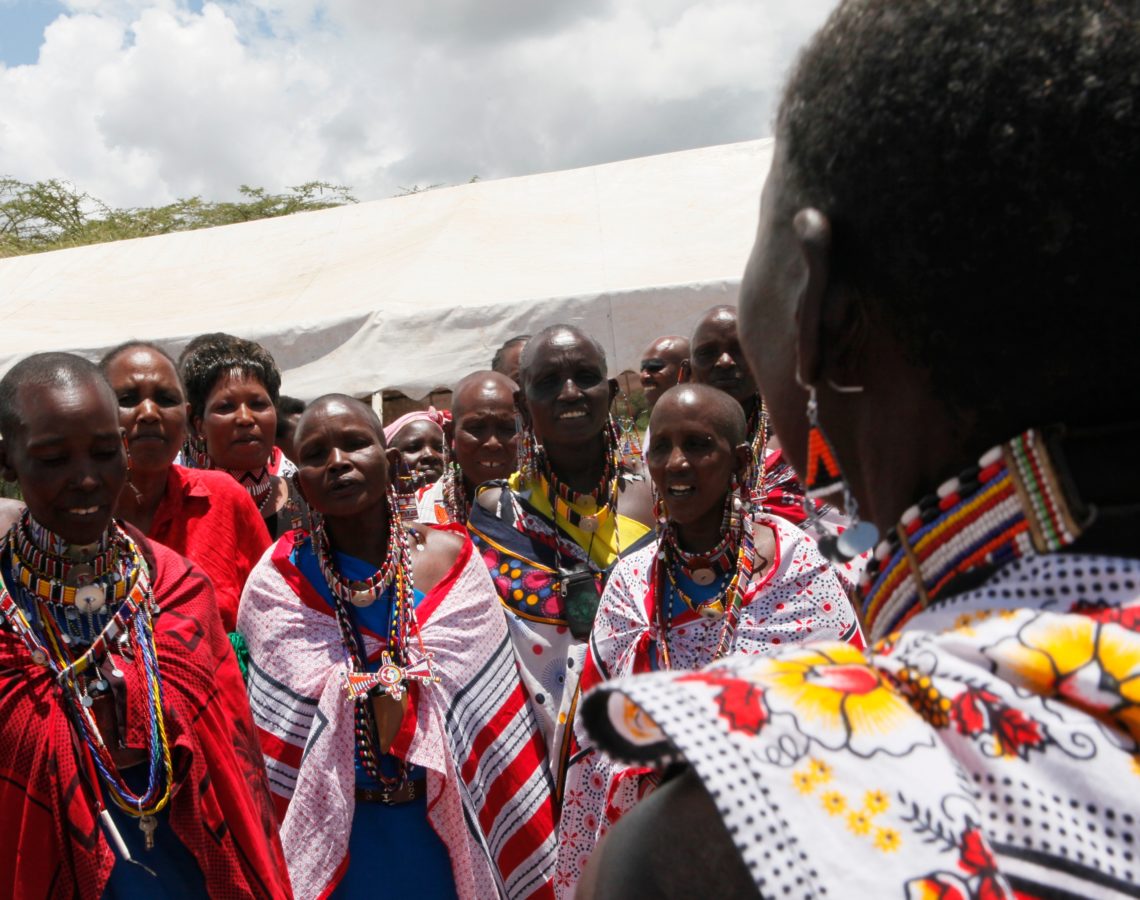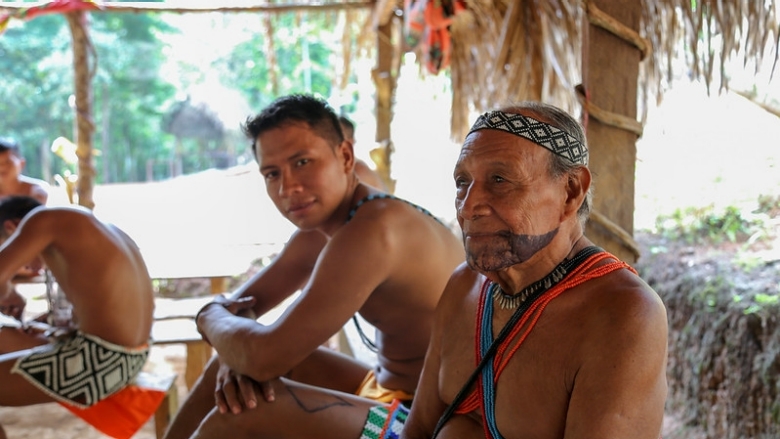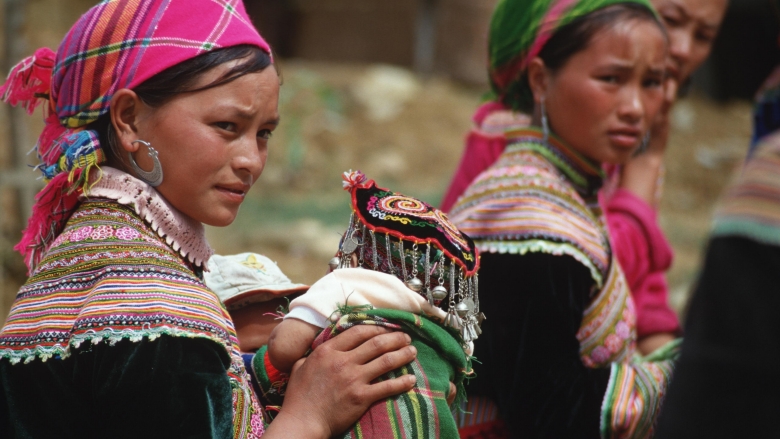Everyone Equal: The Resilience of Indigenous Peoples Across the Globe

STORY HIGHLIGHTS
- The International Day of the World’s Indigenous Peoples is a moment to reflect on the issues faced by Indigenous communities, the remarkable resilience they have shown in the face of the COVID-19 pandemic, and the urgent need to ensure that recovery efforts are equitable and place equal emphasis on addressing their needs.
- There are 476 million Indigenous people from over 90 countries. Though they make up about 6 percent of the global population, they account for about 15 percent of the poorest. The structural exclusion faced by Indigenous Peoples have made them especially vulnerable in the face of the global pandemic.
This story is part of a series focusing on the importance of social inclusion and the need for a concerted global effort to ensure everyone can lead equal, dignified, and empowered lives. It will highlight the challenges, opportunities, voices and experiences from marginalized communities. Follow #EveryoneEqual for updates on new stories.
“The elders are our libraries,” Dr. Mariam Wallet Aboubakrine, a Tuareg pastoralist woman said to the World Bank at an Africa regional dialogue with Indigenous partners recently. The discussion focused on how COVID-19 is impacting Indigenous Peoples and other vulnerable communities who have been historically underserved in Sub-Saharan Africa — and how the Bank can better support them through its response efforts.
There are 476 million Indigenous people from over 90 countries representing 5,000 different cultures and 7,000 languages. They make up roughly 6 percent of global population but about 15 percent of the poorest.In every country across the globe, Indigenous Peoples are poorer, have worse access to basic services. and enjoy far fewer social and economic opportunities. They often live in inaccessible or remote areas, their territories are rarely prioritized for public investments or basic services, and their opportunity to have voice in national policymaking spheres have often been limited. They are no strangers to pandemics and epidemics — but measures to address these crises have often excluded them.
Dr. Wallet Aboubakrine, who is also a trained medical doctor specializing in humanitarian action and education, highlighted that the pandemic has disproportionately impacted the elderly and those with complex and multiple underlying conditions. And as Indigenous partners around the globe have echoed, when elders die, it can result in the total loss of a culture, as the elders are often the primary source for the transfer of traditional knowledge, language, and identity. In remote communities, COVID could lead to the loss of an entire people or affect the very existence of communities.
Transboundary pastoralist communities like the Maasai of Kenya and Tanzania or pastoralists of the Sahel and Central Africa have also been impacted by borders closing during the pandemic, while restricted movement within countries due to COVID-19 mitigation measures hurt the livelihoods of pastoralists, hunter-gatherers and other semi-nomadic and nomadic communities. Markets, food security, basic needs and income generation are impacted, often disproportionately impacting Indigenous Peoples, who largely work in the informal sector.
In addition, underlying conflict and fragility in the region has exacerbated possible exposure to COVID-19. For example, some Mbororo pastoralists from the northwest region of Cameroon have moved into crowded areas to flee conflict from separatists of the Anglophone crisis where infection rates are higher.

Photo: World Bank
The International Day of the World’s Indigenous Peoples helps highlight the issues faced by these peoples and the remarkable resilience they have shown in contending with the pandemic.
Prior to the pandemic, Indigenous Peoples in Latin America largely lacked access to the national health care system and many lacked access to water and sanitation — factors that have been exacerbated by the crisis and contribute to faster infection rates and mortality. A Lancet case study of the Bolivian Amazon found “local medical services are underfunded for many urban indigenous communities” and “are scarce or non-existent for remote rural communities.” Even where access exists, they face stigma and discrimination. Moreover, services are rarely offered in their native languages or with the cultural adequacies that make them feel comfortable.
In Panama, 36 percent of Indigenous Peoples’ lack access to water systems compared to 4 percent of non-Indigenous Peoples, making hand washing and basic hygiene much more difficult to implement. Findings from a rapid assessment led by Indigenous Peoples and Afro-descendants’ organizations in seven countries support this reality and reveal that COVID-19 has had significant livelihood and food security impacts on these communities as well.

Photo: Tran Thi Hoa / World Bank
In Asia, where Indigenous Peoples reportedly comprise two-thirds of the global indigenous population, these communities often have minimal access to clean water, soap, personal protective equipment (PPE), and public sanitation. Local medical services are underfunded for many urban indigenous communities and are scarce or non-existent for remote rural communities. Hospitals and clinics do not have capacity to meet the high demand for COVID-19 testing and treatment in the general population, let alone for indigenous communities located farther away, who often experience stigma or discrimination. Now, they are contending with a loss of livelihoods and access to lands, forests, waters and resources due to lockdowns or restrictions in movement due to the pandemic.
Vietnam, for example, is faced with rising inequality, with poverty increasingly concentrated in ethnic minority communities. While poverty rates declined sharply from over 70 percent two decades ago to below 6 percent ($3.2/day PPP) today, the vast majority of Vietnam’s remaining poor — 86 percent — are ethnic minorities. To mitigate these effects, the World Bank encourages community-driven development programs that support the inclusion of Indigenous Peoples in project planning and implementation.
In Indonesia, AMAN, the national indigenous peoples’ network, has organized an emergency response unit and task forces that encourage communities to undertake their own « Indigenous Community-Based Lockdown,” where people take charge and impose local safety procedures on their own. In Nepal, the Center for Indigenous Peoples’ Research and Development (CIPRED), provides updates on COVID-19 and monitors its impact on the Dura, Gurung and Chepang Indigenous Peoples.
Still, the pandemic will likely exacerbate socio-economic inequalities and deepen poverty among these communities, even as they use Indigenous customs and knowledge to limit the spread of COVID-19.
Dr. Wallet Aboubakrine has one appeal for the global health community, international financial partners and governments – work with Indigenous Peoples to address gaps in pandemic responses and preparedness.
“This pandemic is unveiling the inequalities that Indigenous Peoples are facing,” she said. “Inclusive decision-making is essential to achieving peaceful and inclusive societies for sustainable development. »
Source : Worldbank

